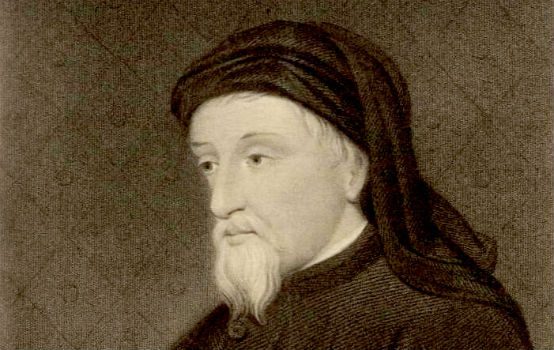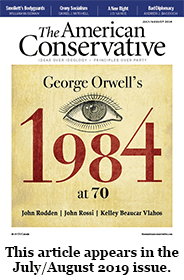The Bad Biographer’s Tale

The first sentence of the epilogue to Marion Turner’s biography of Geoffrey Chaucer (ca. 1342-1400) aptly summarizes the poet’s legacy: “Chaucer became a monumental poet, enclosed in a monumental tomb, with monumental volumes of his Complete Works functioning as the bedrock of the English national canon.” Among his achievements, he invented iambic pentameter, a meter so dominant that all poets writing in English must either embrace it or reject it. 
Inspired by the vernacular works of Boccaccio, Dante, and Petrarch, Chaucer made theradical move from writing poetry in French to writing poetry in English. Boccaccio’s Decameron was also a model in other ways for Chaucer’s immortal Canterbury Tales, perhaps most notably with its realistic portrayals of people outside of the nobility. These portrayals continue to enchant and puzzle readers; “Chaucer Doth Tweet,” which comments on pop culture in Middle English, reaches over 89,000 Twitter followers.
Turner, an associate professor of English at the University of Oxford, exaggerates when she refers to a “Chaucer biography industry,” but it is true that significant documentary evidence about his life has encouraged biographers. The first of several dozen biographies is John Leland’s brief 1540 biography in Latin; the most recent is the 2015 book by one of Turner’s Oxford colleagues, Paul Strohm.
Documents detailing Chaucer’s activities provide us with an arc that begins with his birth around 1342 and ends with his death in 1400. His father was a successful London merchant who provided a solid early schooling for his son, but no college education. Chaucer became fluent in French, Latin, and Italian, which was useful when he went to work in the household of a powerful nobleman at about the age of 15. A few years later he became a soldier for the king and briefly a hostage in France. With his skills—intelligence and tact—he spent much of the rest of his life in direct or indirect service to English kings and nobles.
After his return from France, Chaucer married a lady-in-waiting from a well-connected family; they had two sons and a daughter. His oldest son, Thomas, married into a wealthy family and amassed land and other wealth that dwarfed his father’s ample resources. His daughter, Elizabeth, entered a nunnery through a direct order of the king and then joined Barking Abbey, the preeminent nunnery. There is little known about Chaucer’s trailer child, Lewis, except that the poet clearly doted on his son.
Turner’s biography is avowedly nonlinear: “I’ve chosen to tell the story of his life and his poetry through spaces and places, rather than through strict chronology,” she writes.
Each chapter focuses on a particular space that mattered in Chaucer’s life, as I attempt to recreate multiple kinds of environment. Some are actual places . . . Some represent contemporary structures that mattered both socially and in the contemporary imagination, such as the Great Household or the Inn. Others are more abstract and draw on key metaphors used by Chaucer, such as the Cage or the Threshold. In every case, my aim in exploring the space is to find out more about Chaucer’s imaginative development—as opposed to his emotional life, which I believe is beyond the biographer’s reach.
Exploring the broader context of a poet’s life can work well. For instance, in her 2016 biography of Catullus, Daisy Dunn skillfully drew on her broad knowledge of Roman history and culture to provide useful contexts for the poet’s life.
Turner’s biography falls far short of the Dunn standard because it is poorly written, poorly organized, and poorly conceived. Better copy editing could have resolved some of the problems, such as the random substitution of colons for semicolons, excessive use of the passive voice, dangling participles, incomplete sentences, and run-on sentences that lack parallelism. Sometimes the book translates Latin quotations, and sometimes not.
Other issues would overwhelm a consummate copy editor. Paragraphs routinely extend in a tangled and unreadable fashion. In the “Counting House” chapter, one paragraph includes 26 sentences, many of them quite long, across three pages. Within these swollen paragraphs the prose ricochets across time and space with only a loose associational logic. This approach spawns many meticulously researched, but often irrelevant, digressions of excessive length that disrupt the flow of the narrative. More frustratingly, the book lacks digressions that would have been worthwhile, such as the influence of humanism on Chaucer and the history of vernacular English in literature.
Turner also fails to maintain a consistent voice. Sometimes she is telling a traditional narrative in the manner of a historian. Sometimes her prose becomes suddenly informal and slangy, as when she uses the phrase “he got it in spades.” Sometime she ignores the life of Chaucer and sometimes the book sounds like a transcript of an undergraduate survey course in literature. At other times she imposes the lingo of today’s academy in ways that make little sense. Her discussion of “intertextuality” in Chaucer does work because Chaucer, like most classical and medieval writers, draws heavily on many writers who preceded him. However, the “places and spaces” framework quickly becomes formulaic and tiresome, and references to hybridity and liminality invariably signal a lack of careful analysis. References to “the liminality of death,” “the artisanal spaces of the Tower of London,” and the kidnapping of children as “a breathtaking display of appropriation” are unintentionally humorous.
These contemporary abstractions also prevent Turner from understanding medieval people on their own terms. A paragraph that begins with a discussion of relics and sacramental thought veers without warning in this direction:
But while some people increasingly made their own choices and, through the money economy, were able to move from a prescribed place of work and life to form their own associations and even to write their own narratives, these same changes also led to the development of a heavy bureaucracy that textualized and objectified other people in a relentless homogenization of identity.
Nothing in this book actually supports the thesis that the beginning of the breakdown of medieval economies—often due to broader trade—made life any worse for the unidentified “other people”; it is purely a declaration based on today’s socialist ideologies. It is not even clear which “bureaucracies” were supposedly engaging “in a relentless homogenization of identity,” but any plausible accusation conflicts with ample evidence in the book that Chaucer’s contemporaries often were flourishing just as the centralized social controls of King Richard II were collapsing. Perhaps most stunningly, this alleged “homogenization” flies in the face of Chaucer’s celebrations of the idiosyncrasies of diverse individuals in The Canterbury Tales.
A key part of Turner’s failure to understand the medieval era stems from her palpable distaste for the Church, which reveals itself in her loaded language (emphases added): “Catholics and Protestants competed to claim him as a fellow traveler . . . Chaucer now capitulates to a religious vision of life…” Most of the time, however, Turner makes errors of omission rather than commission when it comes to religion; she simply ignores the complex and pervasive influence of the Church on the people of Chaucer’s era in favor of such slack assertions as “[l]ooking at Chaucer’s life, it is evident that the different areas of his life often overlapped: personal and professional, home and work.”
Princeton University Press has cleverly tried to take advantage of the runaway success of Emily Wilson’s translation of the The Odyssey by billing this book as the first biography of Chaucer written by a woman. The book, however, is at best a mixed blessing for women. Turner questions whether Chaucer has gotten a pass on his quitclaim settlement with Cecily Chaumpaigne for raptus (either rape or abduction) but does not analyze the extensive literature on the subject or even cite the essential 2011 work of Caroline Dunn on the language of ravishment in medieval England.
On the more negative side, Turner’s conclusions about Chaucer’s wife Philippa rely on assumptions that might be called sexist if they were written by a man. Chaucer’s wife served first as a domicella for the Queen, and then for the second wife of the country’s most powerful noble, John of Gaunt. Turner wrongly takes for granted that periods of physical separation (which were usually not that distant) indicate a rupture in the Chaucer marriage, even though both Chaucers worked separately throughout most of their lives in public service. Moreover, a trailer child born after more than 15 years of marriage suggests that Philippa Chaucer saw no need for “an escape route” from her marriage.
Turner also summarily concludes that the only explanation for Chaucer’s daughter moving from one nunnery to the illustrious Barking Abbey was loneliness and a desire to bond with a female relative. Turner never seriously accounts for the primacy of the powerful Barking Abbey among English nunneries or the reasons why John of Gaunt, at least the second most powerful man in England, would have provided substantial financial support for this move.
Turner’s epilogue states that “[b]iographies tend to end with death,” another phrase that should have stirred the copy editor into action, but in a way it captures the essence of this biography. It is a jargon-ridden exercise in academic colonialism in which the author ignores and distorts features of medieval life that are frowned upon by today’s elites, then tries to replace them with liminality, hybridity, and other endlessly fluid postmodern abstractions.
Chaucer deserves better, as do his readers.
A.M. Juster (@amjuster on Twitter), the author of nine books of original and translated poetry, wrote his undergraduate honors thesis on The Franklin’s Tale. He also was the CEO of a publicly traded biotechnology company and served in senior roles for four presidents, including a six-year term as Commissioner of Social Security.
Comments